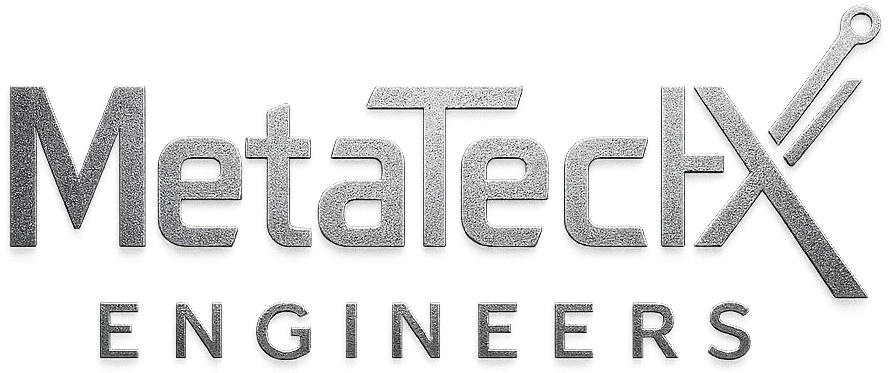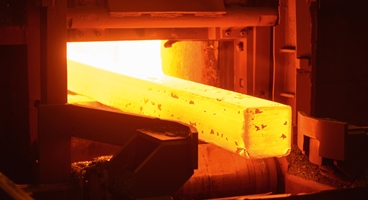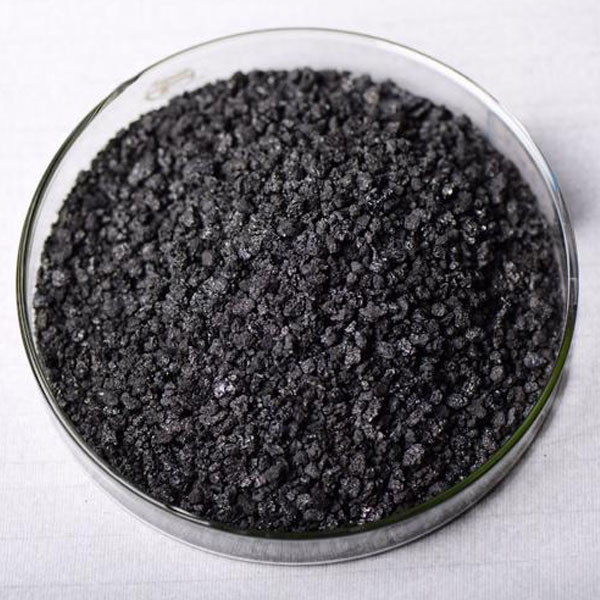Lets understand basic concept about How to Design a Reheating Furnace for Hot Rolling Mill.
Meta TechX Engineers will guide you through the process and parameters involved in designing an efficient reheating furnace. With our expertise in the field, we will provide you with valuable insights and recommendations to ensure a successful design. Meta Blogs
Overview of the Process
The reheating furnace is a crucial component in the hot rolling mill process. Its primary function is to heat the incoming steel billets or slabs to the required temperature for the subsequent rolling process. The design of the reheating furnace plays a vital role in achieving optimal heating efficiency, uniform temperature distribution, and minimizing fuel consumption.
Parameters to Consider
When designing a reheating furnace, several parameters need to be taken into account. These parameters include:
- Heating Capacity: The reheating furnace should be sized appropriately to handle the maximum steel throughput of the hot rolling mill. It should have the capacity to heat the incoming billets or slabs to the desired temperature within a specified time.
- Heating Method: There are several heating methods available for reheating furnaces, including direct-fired, indirect-fired, and regenerative burners. The selection of the heating method depends on factors such as fuel availability, energy efficiency, and environmental considerations.
- Temperature Control: Precise temperature control is essential for achieving uniform heating of the steel billets or slabs. The reheating furnace should be equipped with advanced temperature control systems, such as thermocouples and pyrometers, to ensure accurate temperature measurement and control.
- Fuel Type: The choice of fuel for the reheating furnace is crucial to minimize operating costs and environmental impact. Common fuel options include natural gas, coke oven gas, and heavy fuel oil. The selection of the fuel type should be based on factors such as availability, cost, and emissions regulations.
- Combustion Efficiency: The reheating furnace should be designed to maximize combustion efficiency and minimize heat losses. Proper insulation, combustion air preheating, and flue gas heat recovery systems can significantly improve the overall efficiency of the furnace.
Design Recommendations
Based on our experience and expertise, we have compiled some design recommendations for an efficient reheating furnace:
- Optimal Furnace Geometry: The geometrical design of the furnace, including the shape, dimensions, and burner arrangement, should be optimized to ensure uniform temperature distribution and minimize heat losses. Computational Fluid Dynamics (CFD) simulations can be performed to evaluate different design options and select the most efficient configuration.
- Efficient Burners: Selecting the right type of burners and ensuring their proper installation is crucial for achieving efficient combustion and heat transfer. Advanced burner technologies, such as high-velocity burners and oxy-fuel burners, can enhance fuel combustion and reduce fuel consumption.
- Heat Recovery Systems: Installing heat recovery systems, such as recuperators or regenerators, can recover waste heat from the flue gases and preheat the combustion air or other process streams. This can significantly improve the overall energy efficiency of the reheating furnace.
- Advanced Control Systems: Implementing advanced control systems, such as model predictive control (MPC) or adaptive control algorithms, can optimize furnace operation and improve temperature control. These systems take into account various factors, such as incoming steel properties, ambient conditions, and furnace dynamics, to dynamically adjust furnace parameters and optimize performance.
Zones of Reheating Furnaces
Description of the Zones:
1-Preheating Zone:
The preheating zone is the initial part of the reheating furnace. Its main purpose is to gradually increase the temperature of the incoming cold steel billets or slabs. In this zone, the radiant heat from the burners is absorbed by the steel, gradually raising its temperature. This slow and controlled heating helps to minimize the risk of thermal shock and prevents damage to the material.
2-Soaking Zone:
As the steel progresses through the reheating furnace, it enters the soaking zone. This is where the steel is exposed to a high and constant temperature for a specific duration to ensure homogenous heating throughout. Maintaining the soaking temperature within a narrow range is essential to achieve the desired microstructural properties in the final product. In this zone, the steel undergoes a phase transformation, allowing it to become more malleable and ready for the rolling process.
3-Heating Zone:
The heating zone is the final section of the reheating furnace. Here, the steel reaches its target temperature, which is typically above its recrystallization temperature. The recrystallization temperature is the point at which the internal stresses within the steel are relieved, making it more suitable for deformation during the rolling process. In this zone, the steel is heated to its optimal temperature, ensuring it is ready for the subsequent hot rolling mill.
Importance of the Zones:
- Uniform Temperature Distribution: The preheating, soaking, and heating zones work together to achieve a uniform temperature distribution across the steel. This uniformity is crucial for ensuring consistent and predictable mechanical properties in the final product. Variations in temperature can lead to dimensional inaccuracies, material defects, and reduced productivity.
- Energy Efficiency: Reheating furnaces consume a significant amount of energy. By carefully designing and optimizing the zones, operators can minimize energy loss through radiation, conduction, and convection. Efficient energy usage not only reduces costs but also contributes to a more sustainable and environmentally friendly operation.
- Controlled Heating Rates: The gradual temperature increase in the preheating zone and the controlled soaking duration in the soaking zone allow for precise control of the heating rates. Slow and controlled heating rates minimize thermal gradients within the steel, preventing the formation of internal stresses and potential cracking.
- Optimal Microstructure Development: The correct manipulation of the zones ensures the steel reaches its desired microstructure, which directly influences its mechanical properties. By carefully controlling the heating parameters, such as soaking temperature and duration, the reheating furnace plays a critical role in achieving the desired grain size, structural homogeneity, and mechanical strength in the final product.
- Reduction of Scale Formation: Scale formation, caused by the oxidation of the steel surface during heating, can negatively impact the quality of the rolled product. The reheating furnace zones are designed to minimize scale formation by controlling the atmosphere within the furnace and reducing the exposure time of the steel to high temperatures.
- Improved Equipment Lifespan: Efficient utilization of the zones in the reheating furnace not only ensures the quality of the final product but also extends the lifespan of the overall equipment. By reducing thermal shocks, minimizing scale formation, and optimizing energy consumption, the wear and tear on the furnace components are reduced, resulting in longer service life and reduced maintenance costs.
In conclusion, the zones of reheating furnaces in hot rolling mills are of paramount importance. Through careful design and optimization, these zones ensure uniform heating, controlled heating rates, optimal microstructure development, and minimize scale formation. By maintaining the right temperature profiles in each zone, hot rolling mills can achieve consistent and high-quality products, maximize productivity, and ensure efficient energy usage.
Types of Reheating Furnaces:
1. Pusher Type Reheating Furnace:
The pusher type reheating furnace is one of the most commonly used furnaces in hot rolling mills. It utilizes a pusher mechanism to move the billets or slabs through the furnace. This furnace is known for its high production capacity and uniform heating.
Advantages:
- High heating efficiency
- Improved fuel consumption
- Uniform heating of materials
- Suitable for a wide range of materials and sizes
Disadvantages: - Requires regular maintenance due to moving parts
- Higher initial investment compared to other types
2. Walking Beam Reheating Furnace:
The walking beam reheating furnace is another popular choice in hot rolling mills. It utilizes a walking beam mechanism to transfer the billets or slabs from one section to another within the furnace. This type of furnace offers excellent heating uniformity and energy efficiency.
Advantages:
- Consistent and uniform heating
- Reduced scale loss on the material surface
- Energy-efficient operation
- Easy to maintain and repair
Disadvantages: - Limited loading capacity compared to other types
- Higher initial investment
3. Rotary Hearth Reheating Furnace:
The rotary hearth reheating furnace is designed to handle long and heavy materials such as large billets and blooms. It consists of a rotating hearth where the material is placed and heated. This furnace offers excellent heating uniformity and is suitable for larger-sized materials.
Advantages:
- Uniform heating of large-sized materials
- Suitable for various material shapes
- Improved energy efficiency
- Reduced scale loss
Disadvantages: - Limited production capacity
- Higher initial investment
- Longer heating time
Which Reheating Furnace is Right for Your Hot Rolling Mill?
Choosing the right reheating furnace for your hot rolling mill depends on various factors such as the type of material, production capacity, energy efficiency, and budget. Each type of furnace has its own set of advantages and disadvantages, so it’s essential to evaluate your specific requirements.
If you have a high production capacity and require uniform heating for a wide range of materials, the pusher type reheating furnace may be suitable for your needs. Despite the higher initial investment, its high heating efficiency and improved fuel consumption can result in long-term cost savings.
On the other hand, if you prioritize energy efficiency and reduced scale loss, the walking beam reheating furnace may be a better choice. It offers excellent heating uniformity and is relatively easier to maintain and repair. However, it may have a slightly lower loading capacity.
For large-sized materials and improved energy efficiency, the rotary hearth reheating furnace is worth consideration. While it may have a limited production capacity, its uniform heating and suitability for various material shapes make it an ideal choice for specific applications.
Conclusion:
Reheating furnaces are vital components in the hot rolling mill process. Choosing the right type of furnace can significantly impact the quality, efficiency, and cost-effectiveness of the rolling operation. The pusher type, walking beam, and rotary hearth furnaces each have their own advantages and disadvantages. Consider your specific requirements and consult with experts to determine the most suitable reheating furnace for your hot rolling mill.




One thought on “Parameters to Design Reheating Furnace for Hot Rolling Mill”